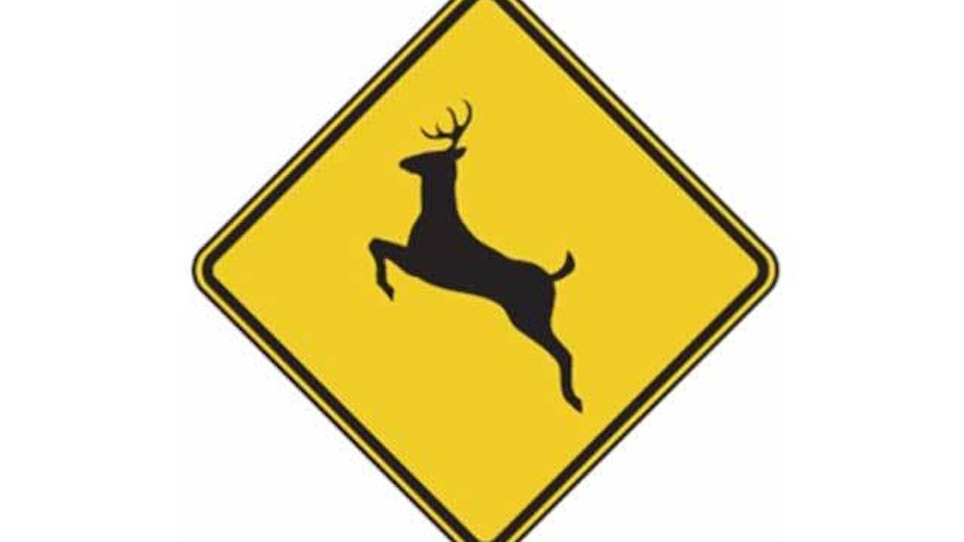MICHAEL A. SAWYERS | Cumberland Times-News
LaVALE, Md. (AP) — It's a dirty job and Glen Roberts has to do it.
"I couldn't even begin to tell you," Roberts said, referring to the number of deer he has removed from state highways.
Although Roberts isn't counting, Tim Davis is. Davis is the resident maintenance engineer at the State Highway Administration office in LaVale.
"The bulk of the deer we pick up (in Allegany County) are from the middle of September through December," he said. "Usually about 250 or so."
The linear leader of road-killed deer is U.S. 220 between Cumberland and McCoole. Roberts said he has made more carcass-removal trips to that highway than any other in Allegany County. He said hot spots are near the Western Correctional Institution at Cresaptown and the American Woodmark plant between Pinto and Rawlings.
Davis said crews get to the deer as quickly as they can, especially if the carcass is in a travel lane and presenting a danger to motorists.
SHA finds out about road-killed deer from a variety of sources.
"The employees in our district office let us know if they have seen dead deer as they drive to work in the morning," Davis said. "People who live near where a deer has been struck and killed will call us, especially during warm months because of the smell."
In addition, travelers with Internet access often go to the SHA website to pass on the location of a dead whitetail.
State Farm Insurance estimates there are at least 30,000 times each year that a vehicle driven in Maryland strikes a deer, according to Brian Eyler of the Maryland Wildlife & Heritage Service. Maryland has the 14th highest risk among states for striking a deer. West Virginia is No. 1 and Pennsylvania ranks fifth.
Some of Maryland's vehicle-struck deer end up as dinner — for people.
"Folks might be surprised how many times we get a call from a motorist telling us a deer has been struck, but is still alive. Then we send somebody out to take care of the matter and when our people get there the deer is gone. It has been picked up by some other passerby," said Eyler, deer project director for the wildlife agency.
The unsaid aspect is that whoever took the deer likely dispatched it as well.
Actually, it is legal to possess a road-killed deer, but there is a right way to do it.
"We give nonhunting mortality tags to the enforcement agencies in a county and they can fill out the tag and give it to the person who wants to take the deer," Eyler said. In 2012, 66 such tags were issued in Allegany County and 29 in Garrett County.
Many struck deer go uncounted, Eyler said, either wandering into the nearby woods or fields where they succumb or survive.
Allegany County road crews pick up dead deer on county roadways.
Spokesman Paul Goldsworthy said some of those carcasses are taken to the Tri-State Zoo to be consumed by captive carnivores.
Hot spots include Orleans, Cresap Mill and Williams roads, and the Mexico Farms area, he said.
Some of the deer gathered by SHA are used by the Maryland Wildlife & Heritage Service for a project monitoring the presence of golden eagles.
"They are taken to high elevations and put in open fields where they will be very visible," said WHS spokesman Jim Mullan. "We aim trail cameras at the carcasses to get images of the eagles."
SHA disposes of some carcasses by simply moving them to a location in the highway's right of way away from any homes and placing them off to the side of the road. Nature takes over from there.
At times, Roberts has reached the scene of a dead deer and a disabled car before the arrival of law enforcement.
"There have been times we needed traffic control to get the scene cleaned up," Roberts said.
It isn't uncommon, according to Roberts, to find a dead roadside buck that has had its antlers removed by a passerby who prizes them.
Dead critters in the middle of Allegany County roads have included coyotes and bobcats, but not many.
"Coyotes and bobcats seem to have a sixth sense about avoiding traffic," said Eric Minnich, an assistant to Davis.
It is not only wild animals that die on highways. As a courtesy, Roberts and his cohorts will take the tags from a dead pet dog that has been struck and killed to bring closure for the owners.
"We'll move the dog to the side of the road and let them know where it is. Most of the time they come and get it," he said.
Picking up dead and often smelly deer carcasses is just part of the job for Roberts and his cohorts. Most of the time, it is routine, but not always.
"One of our fellows walked over to grab a dead deer and move it into the truck and it jumped up and ran away," he said.
———
Information: Cumberland (Md.) Times-News, www.times-news.com






